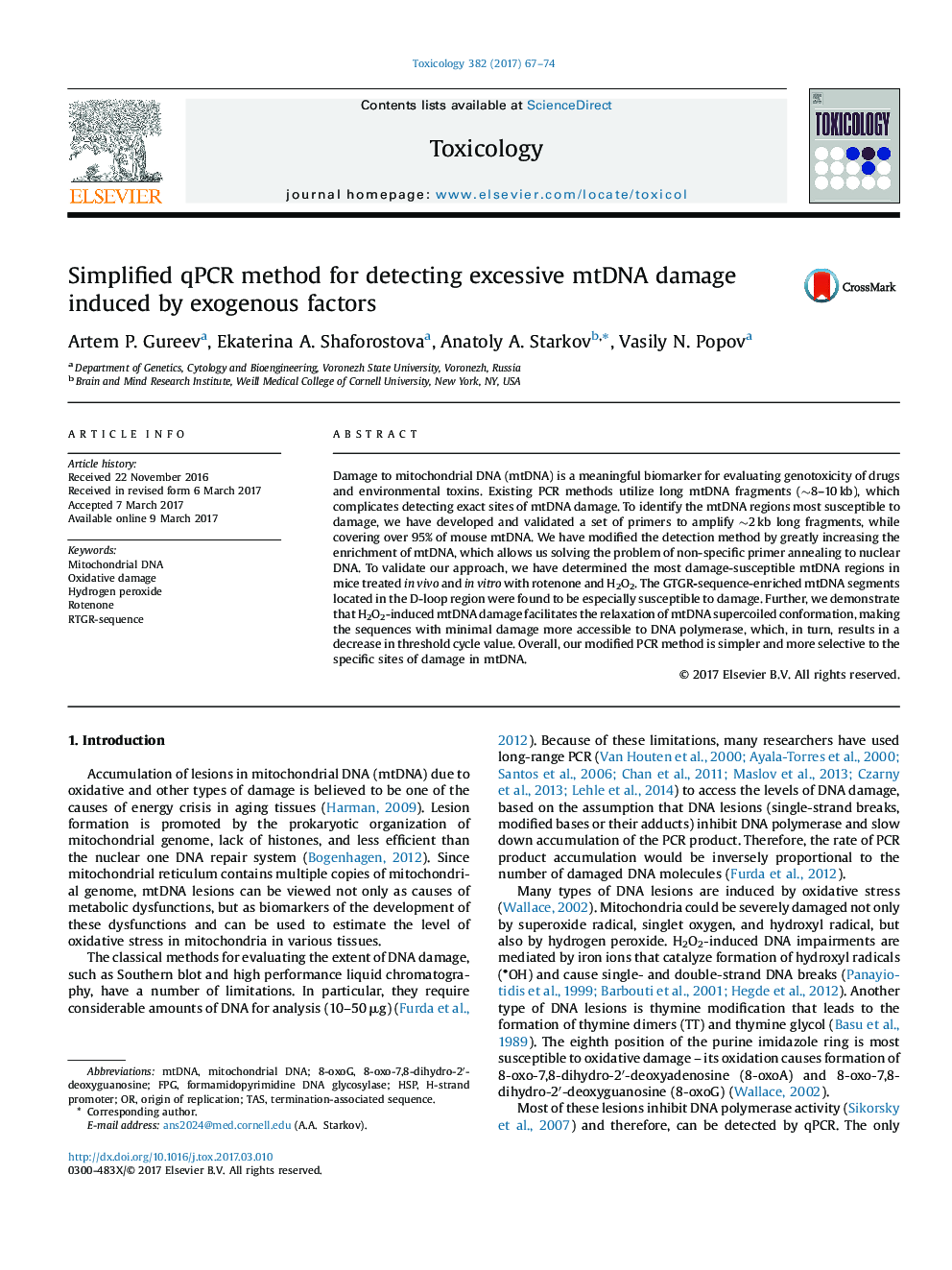| Article ID | Journal | Published Year | Pages | File Type |
|---|---|---|---|---|
| 5561778 | Toxicology | 2017 | 8 Pages |
Abstract
Damage to mitochondrial DNA (mtDNA) is a meaningful biomarker for evaluating genotoxicity of drugs and environmental toxins. Existing PCR methods utilize long mtDNA fragments (â¼8-10Â kb), which complicates detecting exact sites of mtDNA damage. To identify the mtDNA regions most susceptible to damage, we have developed and validated a set of primers to amplify â¼2Â kb long fragments, while covering over 95% of mouse mtDNA. We have modified the detection method by greatly increasing the enrichment of mtDNA, which allows us solving the problem of non-specific primer annealing to nuclear DNA. To validate our approach, we have determined the most damage-susceptible mtDNA regions in mice treated in vivo and in vitro with rotenone and H2O2. The GTGR-sequence-enriched mtDNA segments located in the D-loop region were found to be especially susceptible to damage. Further, we demonstrate that H2O2-induced mtDNA damage facilitates the relaxation of mtDNA supercoiled conformation, making the sequences with minimal damage more accessible to DNA polymerase, which, in turn, results in a decrease in threshold cycle value. Overall, our modified PCR method is simpler and more selective to the specific sites of damage in mtDNA.
Keywords
Related Topics
Life Sciences
Environmental Science
Health, Toxicology and Mutagenesis
Authors
Artem P. Gureev, Ekaterina A. Shaforostova, Anatoly A. Starkov, Vasily N. Popov,
